#TRADITIONS
Explore tagged Tumblr posts
Text
The Bear Dance is an ancient pagan custom in Romania. Every year around Christmas, groups of people dress up in bear costumes and parade the streets dancing. They’re accompanied by drummers and singing "bear tamers”.
This custom dates back to the pre-Christianity era when it was believed that bears could ward off misfortunes and bring good luck.
Full video here
419 notes
·
View notes
Text






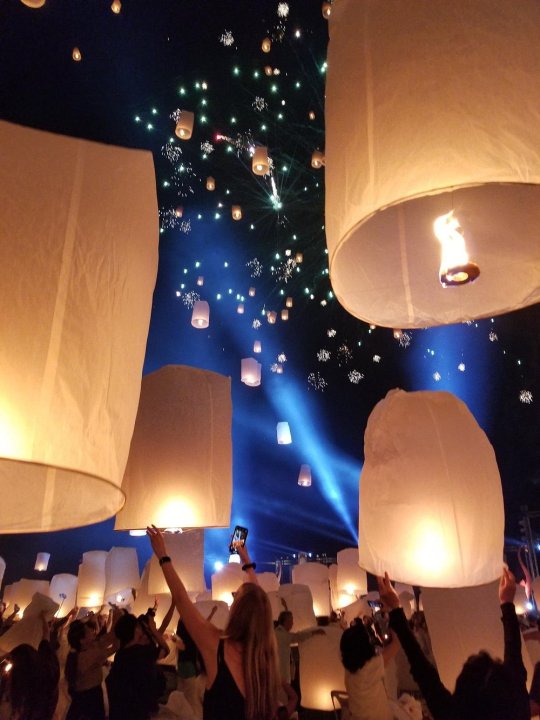
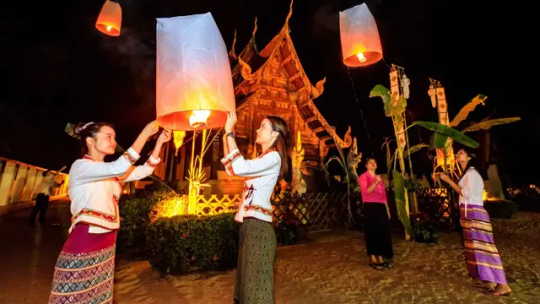


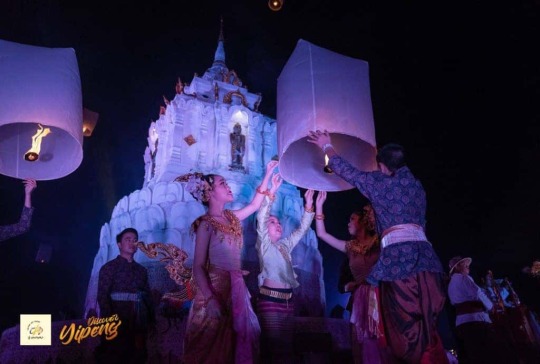
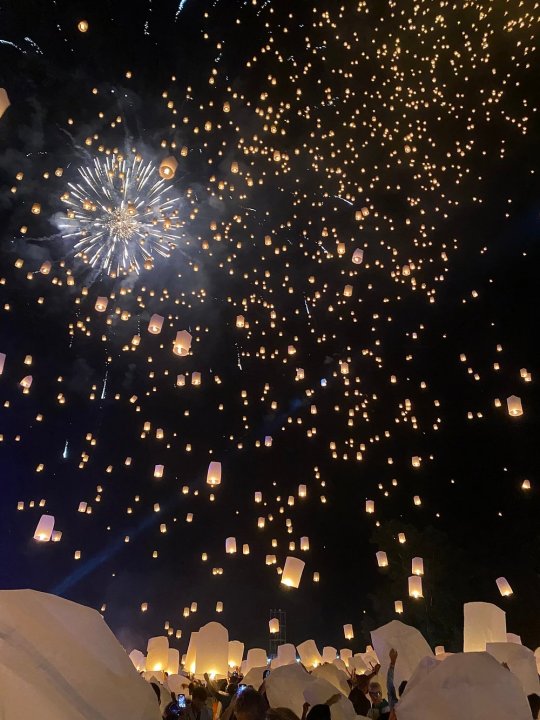



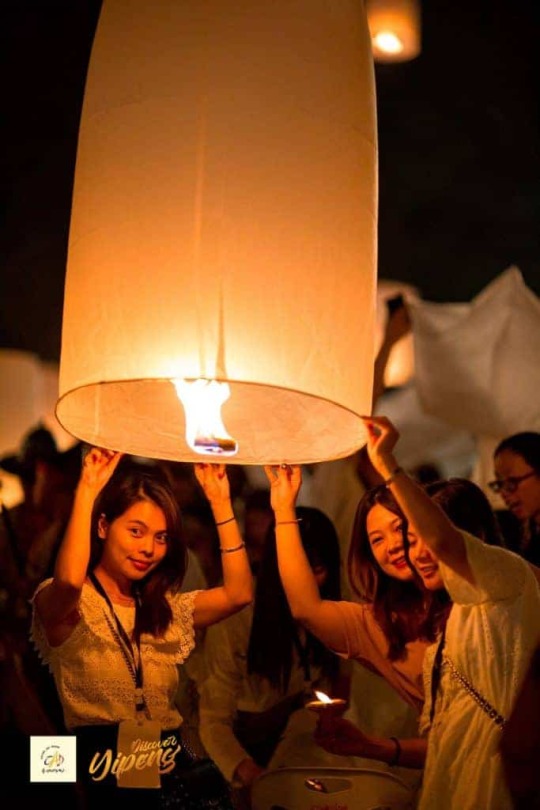







Магия света фестиваля Йи Пэн.
Йи Пенг (или Йи Пенг, фестиваль фонарей в Чиангмае) - это еще один фестиваль света, отмечаемый в северной части Таиланда наряду с Лой Кратонг. Это ланна-фестиваль с самым большим праздником, проходящим в Чиангмае, древней столице бывшего королевства Ланна.
Основное событие - выпуск множества небесных фонарей, украшенных огнями, которые ‘плывут’ в небе. На самом деле, небесные фонари на тайском языке называются "ком лои", что означает "плавающие фонари". Ком лои изготавливаются из рисовой бумаги, натянутой на бамбуковую раму, к которой прикреплена свеча. Горячий воздух от свечи удерживается внутри и поднимает фонарь с земли. Однако, так как фонари могут быть опасны, на ком лои накладываются все больше и больше государственных ограничений.
На протяжении веков Йи Пэн не только символизировал конец сезона дождей и начало прохладного сезона, но и отражал принципы буддистской культуры. По традиции запуск фонарика означает избавление от тьмы и движение к свету — напоминание, что каждый из нас может начать новую главу, ��ставив за спиной трудности
Во время фестиваля можно увидеть различные виды фонарей: дома и храмы украшаются ком фай (бумажные фонари); ком туе - это фонари на палке; ком париват - это вращающиеся фонари, установленные в храмах.
The Magic of Lights at the Yi Peng Festival.
Yi Peng (or Yi Peng, Chiang Mai Lantern Festival) is another festival of lights celebrated in northern Thailand along with Loy Krathong. It is a Lanna festival with the largest celebration taking place in Chiang Mai, the ancient capital of the former Lanna Kingdom.
The main event is the release of many sky lanterns decorated with lights that ‘float’ in the sky. In fact, sky lanterns are called ‘kom loi’ in Thai, meaning ‘floating lanterns’. Kom loi are made from rice paper stretched over a bamboo frame with a candle attached to it. The hot air from the candle is trapped inside and lifts the lantern off the ground. However, because the lanterns can be dangerous, there are more and more government restrictions on kom loi.
For centuries, Yi Peng has not only symbolized the end of the rainy season and the beginning of the cool season, but also reflected the principles of Buddhist culture. Traditionally, releasing a lantern signifies getting rid of the darkness and moving towards the light - a reminder that each of us can start a new chapter, leaving behind difficulties
During the festival, you can see different types of lanterns: houses and temples are decorated with kom fai (paper lanterns); kom tue are lanterns on a stick; kom pariwat are rotating lanterns installed in temples.
Источник:/t.me/roundtravel, /www.tripadvisor.ru/Attraction_Review-g293917-d8820428-Reviews-Yi_Peng_and_Loy_Krathong_ Lantern _Festival-Chiang_Mai.html, /fanclubthailand.co.uk/yi-peng-lantern-festival-chiang-mai-north-thailand/, /yipenglanternfestival.in.th, //dzen.ru/a/Zy3Q9rhhnHkGJ2pn, /life-thai.com/noch-nebesny-h-fonarikov-v-chiang-mae/, //www.phuketferry.com/ru/yi-peng-lantern-festival.html.
#Таиланд#Чиангмай#фестиваль#праздник#традиции#огни#Ком лои#бумажный фонарь#фейерверк#ночное небо#фотография#Thailand#Chiang Mai#festival#traditions#holiday#Kom loi#paper lantern#fireworks#night sky#lights#photography
351 notes
·
View notes
Photo

The map shows different New Year's Eve traditions around the globe, highlighting unique cultural practices.
by maven.mapping/instagram
In Mexico, people walk around with an empty suitcase to symbolize a wish for travel.
In Scotland, the tradition of first-footing involves being the first to visit friends and neighbors to bring good fortune.
In Spain and Italy, wearing red underwear is believed to ensure luck and passion for the coming year.
In Russia, people write a wish on paper, burn it, toss the ashes into a champagne glass, and drink it to make the wish come true.
In the Philippines, wearing polka dots and eating round fruits symbolizes prosperity.
In Brazil, wearing white and jumping into the ocean is meant to bring peace and spiritual cleansing. In South Africa, throwing old appliances and furniture out of windows signifies letting go of the past to make space for new opportunities.
225 notes
·
View notes
Text

Caput Apri Defero
Another holiday plate of mine! Based on a 1895 illustration by Walter Crane.
#art#illustration#digital art#artists on tumblr#artwork#drawing#oc#rb#christmas#xmas#holidays#festive#holiday season#merry christmas#saturnalia#winter solstice#yuletide#traditions#happy yule#boar#feast#winter#pine trees#walter crane#ceramic#ceramics#pottery#ceramic art#carving#sgraffito
215 notes
·
View notes
Text
i absolutely LOVE seeing traditional/folk clothing from different countries/regions of the world so here r a few of my favorite folk clothes and their country/region :)




top left: hungary traditional folk clothing
top right: traditional aspara dancer from cambodia
bottom left: chinese hanfu inspired from (i believe) the tang dynasty
bottom right: caucus region (specifically armenia, i believe) traditional clothing
#traditional clothing#traditions#armenia#armenian#chinese#china#hanfu#chinese hanfu#tang dynasty#fashion#cambodia#cambodian#hungary#hungarian
460 notes
·
View notes
Text

Ishi was the last known member of the Yahi, a subgroup of the Yana people in California. Yahi customs forbade individuals from speaking their own name without another Yahi’s introduction, so Ishi stated he had no name. Anthropologists named him "Ishi," meaning "man," as his real name was never revealed.
#Ishi#Yahi#Native American#culture#naming#traditions#anthropology#history#California#customs#man#tribe
155 notes
·
View notes
Note
Can you shed any light on how Santa came to give naughty children coal, when coal used to be a reasonably useful present?? I tried googling it but nothing that came up seemed researched better than folk wisdom, or modern-day people trying to make it make sense.
Considering that the holiday has come to dominate upwards of 1/12 of the cultural calendar every year in much of the world - there has been shockingly little academic research done on the history of Christmas and Christmas traditions. So unfortunately folk wisdom is kind of all we have on this subject.
Coal has long been associated with various cultural figures who fall under the "winter gift-bringer" archetype. The Italian witch-like figure Befana brings coal or ashes to bad children, and the Basque Olentzero was traditionally a charcoal burner by profession. However, as most folk-lore consists mainly of unwritten cultural tradition, it is very difficult to determine exactly when and how these figures developed, and what, if any, influence they had on one another.
(For the duration of this I'm going to dub any item brought by Santa as a punishment as an 'anti-gift' for a lack of a better term. Also, the following information is specific to the continental US, as that's the area I most focus on.)
To begin with - coal, in the anti-gift sense, does not necessarily refer to valuable high-grade anthracite. It could just as easily refer to low-grade industrial coal or even charcoal. It was also given in such small quantities (small enough to fit in a child's sock, as that's what stockings were originally) as to be worth almost nothing, no matter the quality.
I actually tend to agree with what most modern articles written on this subject theorize - which is that coal was just a conveniently located item that every household had. Stockings were traditionally hung on the mantle or around the stove, so the coal scuttle was right there for any disgruntled parents looking to punish their child's misbehavior.
This theory seems to be supported by other anti-gifts I've come across in Dear Santa letters which appear to be overwhelmingly fireplace related - ashes, sticks, sand (commonly used in fire buckets) and once even buffalo chips.
Ashes in particular were a very common anti-gift in much of the US in the late 19th/early 20th century. Though often the belief was that Santa would throw ashes in your eyes if you peek at him, rather than leave them in your stocking for bad behavior.
By far the most common non-fireplace-related anti-gift I come across in Dear Santa letters is switches (as in branches/rods used for corporal punishment). I've only done the scantest of formal documentation on the subject but, just given my general observations, - I'd say that switches were just as common of an anti-gift as coal, if not more so, up until the mid-20th century when corporal punishment/spanking began becoming less culturally acceptable. I have also noted that switches were noticeably more common in the Southern US, where it is not uncommon to see them mentioned in Dear Santa letters well into the 21st century (though my attempts to document any very recent data on this has been somewhat complicated by the introduction of the Nintendo Switch.)
Coal being a relatively useful and valuable item seems to have been a joke for as long as it has been a tradition, and it is not at all uncommon to see adults pointing out that fact - especially during strikes and shortages.

Even in times of scarcity, I suspect most stocking coal ended up right back in the coal bucket, as I can't imagine most children were interesting in keeping it - thus costing the parents (or Santa) absolutely nothing.
Was coal the traditional anti-gift where any of you grew up, or was it something else?
#sorry for the late response#I accidentally put this in my drafts instead of my queue#christmas#traditions#history#coal#dear santa#asks#long post
185 notes
·
View notes
Text
Establish new traditions together.
When the Hot Wife and I fold laundry, I always wear a pair of her boxers on my head. Little did she know that I’d still be doing it 20+ years into our relationship. She smiles, rolls her eyes, and pulls them off my head to fold them when everything else is done.
I love it when they’re still warm from the dryer like they were today. 😁
#traditions#silly couple stuff#I love to make her smile#be playful#butch#dyke#wlw#lesbian#sogay#queer#wives#this is love
145 notes
·
View notes
Text
How???
#christmas tree#xmas tree#lighting#lights#light my fire#flame#science#nature#traditions#church#merry xmas#xmas#christmas#merry christmas#trees#happy tree friends#trees and forests#home decor#decor#decoration#christmas decorations#xmas decorations#holiday decorations#firemen#safety#fire safety#arson#candles#christian living#christian tradition
151 notes
·
View notes
Quote
Men marry because they are tired; women because they are curious. Both are disappointed.
Oscar Wilde, A Woman of No Importance
1K notes
·
View notes
Text



CHARLES LECLERC and MAX VERSTAPPEN
Post Qualifying, Miami GP 2024
453 notes
·
View notes
Text

Russian Old Believer Cemetery,Kem' (1910s)
#Россия#Russia#vintage#photography#русские#russians#slavs#старообряд��ы#староверы#old believers#russian#traditions#Eastern Europe#photo#Кемь#Kem'#traditional#cemetery#history#Europe#photos#folk#nature#european#vintage photography#1910s#20th century
273 notes
·
View notes
Photo

Will you receive food at someone’s house as a guest?
by amazing__maps
1K notes
·
View notes
Text










Как исполнить желание в Велесову ночь.
Для многих ночь с 31 октября на 1 ноября ассоциируется с Хэллоуином или Самайном, западными праздниками в канун Дня всех Святых. Но в славянской традиции на эту дату приходится свой праздник – Велесова ночь.
Велесова Ночь – магическая, наступит с 31 октября на 1 ноября , когда Белобог окончательно передаёт Коло Года Чернобогу, а Врата Нави (астрального плана бытия) до первых петухов (либо до самого рассвета) широко распахнуты в Явь.
Праздник этот для наших предков имел особое значение, ведь именно в этот день происходило непосредственное «общение» с Духами умерших. В Велесову ночь духи предков возвращаются к своим потомкам, чтобы преподнести им уроки и благословить весь Род. Ночью c 31 октября на 1 ноября на улицу ставят тарелку с угощением для душ умерших.Зажигались праздничные свечи, защищающие от злых духов, на порог и подоконники клали рябиновые ветви, а во дворе до самого утра горел костер. На Алтарь праздника кладутся яблоки, тыквы, кабачки, осенние цветы. Вспоминают ушедших близких, друзей, родственников, но без сожаления.
Перед сном в Велесову ночь можно загадать желание. Для его исполнения положите под подушку яблоко, а утром съешьте. Кстати, при очищении яблока от кожуры следите за тем, какой длинны получается стружка – чем она длиннее, тем дольше вы проживете.






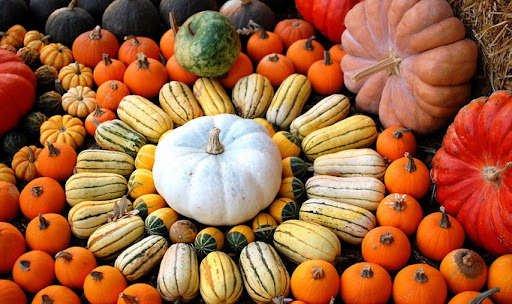

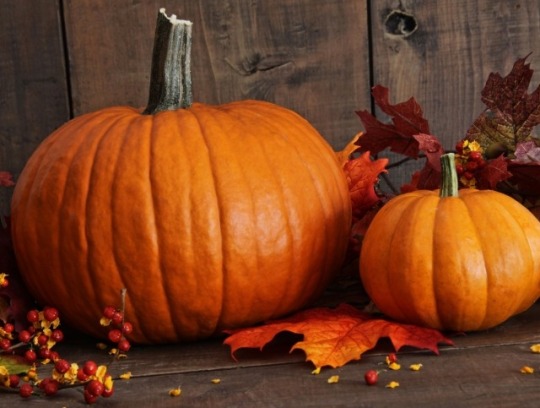


How to make a wish come true on Veles night.
For many, the night from October 31 to November 1 is associated with Halloween or Samhain, Western holidays on the eve of All Saints' Day. But in the Slavic tradition, this date has its own holiday - Veles night.
Veles night is magical, it comes from October 31 to November 1, when Belobog finally hands over the Kolo of the Year to Chernobog, and the Gates of Navi (the astral plane of existence) are wide open to Yav until the first roosters (or until dawn).
This holiday had a special meaning for our ancestors, because it was on this day that direct "communication" with the Spirits of the dead took place. On Veles night, the spirits of the ancestors return to their descendants to teach them lessons and bless the entire Family. On the night from October 31 to November 1, a plate with treats for the souls of the dead is placed outside. Festive candles were lit to protect against evil spirits, rowan branches were placed on the threshold and windowsills, and a fire burned in the yard until the morning. Apples, pumpkins, squash, autumn flowers are placed on the Altar of the holiday. They remember their departed loved ones, friends, relatives, but without regret.
Before going to bed on Veles' night, you can make a wish. To make it come true, put an apple under your pillow and eat it in the morning. By the way, when peeling an apple, watch how long the shavings are - the longer they are, the longer you will live.
Источник:/www.kp.ru/family/prazdniki/velesova-noch/, ://ks-yanao.ru/narrative/obschestvo/velesova-noch-kak-prazdnujut-slavjanskij-hellouin-obychai-obrjady-misticheskoj-daty, //lenta.ru /articles/2023/10/26/velesova-noch-v-2023-godu/.
#Славяне#культура#Велесова ночь#история#обычаи#мистический праздник#традиции#тотемы#урожай#тыквы#яблоки#рябина#костер#Slavs#culture#Velesov night#mystical holiday#history#traditions#customs#totems#harvest#pumpkins#apples#rowan#bonfire
166 notes
·
View notes
Text

Since it´s still Christmas time, and fairy tales are still running on TV, I decided to draw my favourite princess, princess Lada from czech tale - Princezna se zlatou hvězdou na čele - 1959
#princezna se zlatou hvězdou na čele#czech tumblr#czech art#princess#digital art#art#traditions#fairy tales#czech republic#czech fairy tales#pohádky#vánoce#vánoční pohádky#princezna se zlatou hvězdou#princezna lada#christmas
107 notes
·
View notes